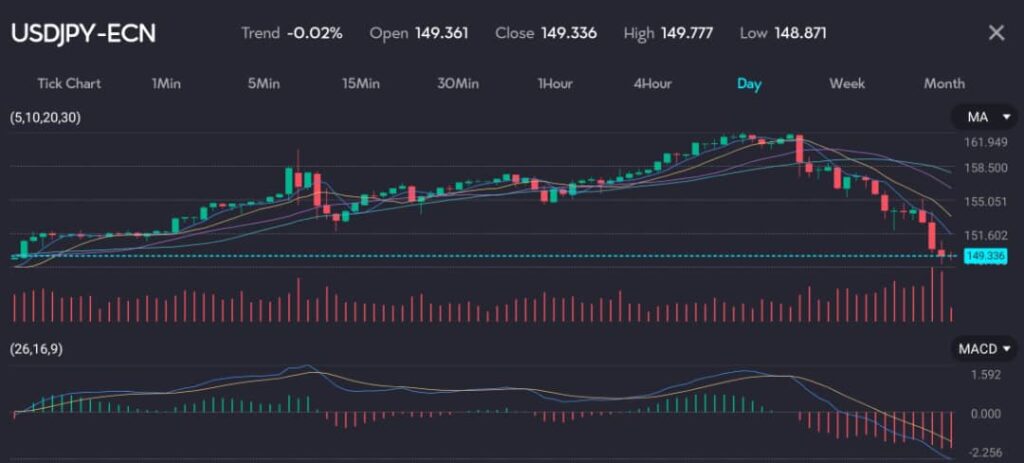Key points:
- Yen and Swiss franc near multi-month highs due to U.S. manufacturing slump.
- Sterling hits one-month low as Bank of England starts rate-cutting cycle.
The Japanese yen and Swiss franc traded close to multi-month highs against the dollar on Friday. An unexpected drop in U.S. manufacturing sparked fears of an economic slowdown, causing stocks and bond yields to fall sharply.

See: Japanese yen on the rise as seen on the VT Markets app.
Yen and Swiss franc surge to multi-month highs against dollar
The yen stood at 149.49 per dollar at 0400 GMT, having strengthened to 148.51 overnight, its highest level since mid-March. The Swiss franc gained about 0.1%, reaching 0.87225 per dollar, its strongest point since early February at 0.8722. These currencies outperformed the dollar overnight, which typically attracts safe-haven flows even when the U.S. is a source of economic concern.
In contrast, sterling fell to a fresh one-month low after nearly a 1% drop overnight as the Bank of England began its interest-rate cutting cycle with a finely balanced decision. The euro hovered near a one-month low following dovish remarks from a European Central Bank official.
Megacap stock selloff on Wall Street triggers declines in Asian markets
On Wall Street, megacap stocks led a selloff that echoed across Asia. Japan’s Nikkei dropped as much as 5.3%, South Korea’s Kospi fell 3.3%, and Hong Kong’s Hang Seng declined 2%.
U.S. 10-year Treasury yields plunged as much as 14 basis points to 3.965% overnight, breaching the 4% psychological barrier for the first time in six months. The decline continued in Asia, reaching a low of 3.944%.
You might be interested: Emerging Asian currencies and stocks surge anticipating Fed decision
The U.S. economic outlook will face a critical test later on Friday with the release of monthly payroll figures. Rate cut pricing appears excessive, with a possibility that U.S. data might stabilise, leading to a potential recovery in the dollar.
Sterling dips as Bank of England opts for cautious rate cut
Meanwhile, sterling slipped 0.11% to $1.2721, earlier dipping to $1.2713, its lowest since July 3. The Bank of England’s Governor Andrew Bailey led a 5-4 decision to reduce rates by a quarter-point to 5%, indicating a cautious approach to future cuts. The central bank seems to prefer a steady quarterly pace of reductions.
Sterling is expected to gradually strengthen, as the central bank’s cautious stance on rate cuts suggests a balanced approach.
The euro remained flat at $1.0793 after reaching a three-week low of $1.07775 overnight. ECB policymaker Yannis Stournaras warned of a weak euro zone economy potentially pushing inflation below the 2% target, reinforcing expectations for two rate cuts this year.
Start trading now — click here to create your live VT Markets account.









